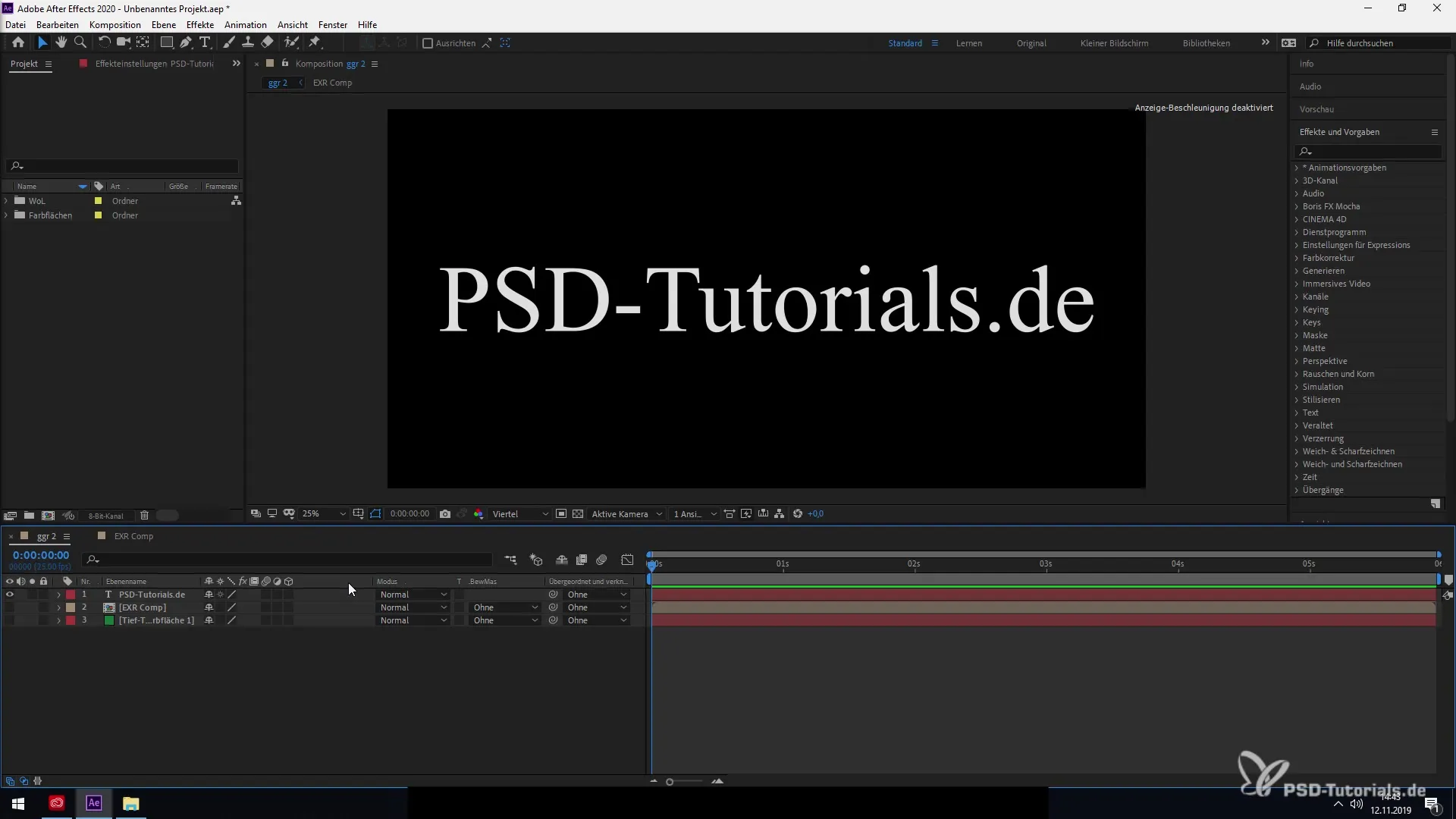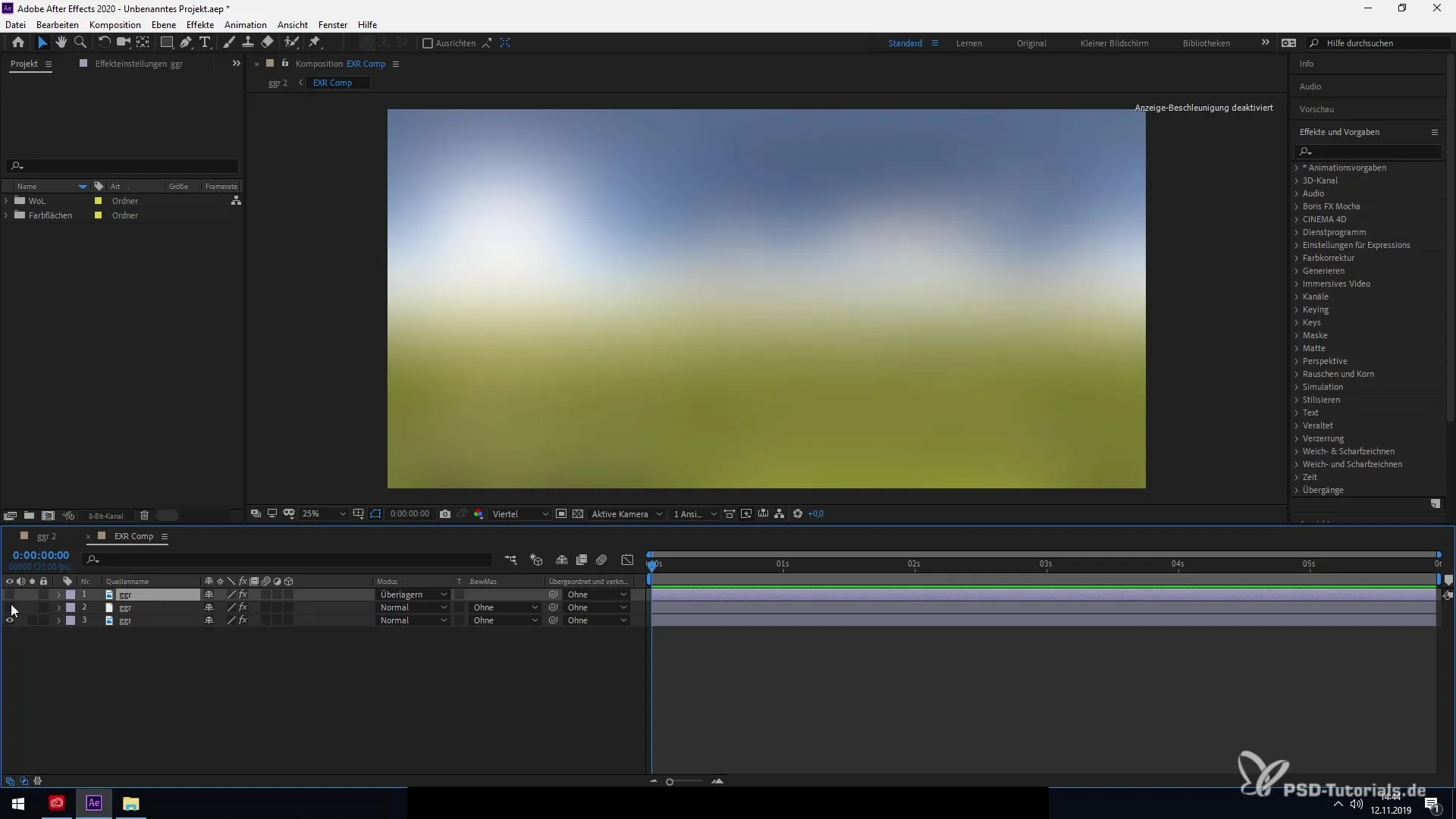EXR-files offer an excellent way to process high-resolution images with a wider color range. The new feature in After Effects CC 2020, introduced in November 2019, allows you to work with EXR files and make the most of them in your projects. In this guide, you will learn how to import, edit, and effectively utilize the advanced features of After Effects to achieve impressive results.
Main insights
- After Effects CC 2020 supports the import and editing of EXR files.
- You can make changes to individual layers within an EXR file.
- Combining EXR files with other image formats is now possible.
- Utilize Cryptomatte and alpha channels for improved workflow.
Step-by-step guide
Step 1: Import EXR file
To get started, you need to import an EXR file into your project. To do this, select the "File" menu option "Import" and locate the desired EXR file on your computer. This file can be dragged into the composition, so you should first create a composition.

Step 2: Create composition
Create a new composition in which you want to use your EXR file. Click on "New Composition" and adjust the settings according to your project. You can drag the EXR file directly into this composition and edit it there.
Step 3: Edit layers within the EXR file
After importing and placing the EXR file in your composition, you have the option to work within the EXR layers. Click on the EXR file to browse the various layers. Here, you can change color values and adjust individual layers to your liking.
Step 4: Make adjustments and fine-tuning
Use After Effects tools to optimize the contrasts and color values of your EXR file. This can significantly enhance the visual quality of your project. Experiment with different settings to achieve the desired look.
Step 5: Exchange between different formats
You have the option to combine your EXR file with other image formats, such as regular image files or HDR files. This flexibility allows you to create creative combinations that enhance the overall image.

Step 6: Rendering and sharing
When you are satisfied with the final result, you can render your composition. Select "File > Export" and choose the desired format in which you want to save your file, for example, in HDR format. This allows for seamless sharing of your project with other programs like Premiere Pro.

Step 7: Using Cryptomatte and alpha channels
Another helpful feature is the use of Cryptomatte, which allows you to create masks efficiently. Additionally, the alpha channels are now directly included in the EXR files, giving you more control over layer processing.
Summary - Efficiently using EXR files in After Effects CC 2020
In this guide, you learned how to import and edit EXR files in After Effects CC 2020. You have experienced the entire workflow from creating the composition to adjusting the layers, rendering, and sharing with other software. Use these new features to take your projects to the next level.
Frequently Asked Questions
How do I import an EXR file into After Effects?You select "File" in the menu and choose "Import" to locate the EXR file on your computer.
Can I work with EXR files alongside other formats?Yes, you can combine EXR files with other image formats such as HDR files.
What is Cryptomatte and how does it help me?Cryptomatte allows you to efficiently create masks based on the contents of your EXR file.
Can I use the alpha channels of an EXR file?Yes, the alpha channels are directly included in the EXR files and can be used in After Effects.
How can I format my composition in HDR?After editing your project, select "File > Export" and choose the HDR format for rendering.


